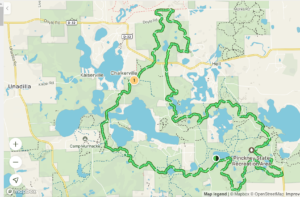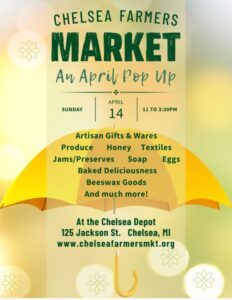By Jennifer Fairfield
I don’t know about you, but I could use a little more sunshine than we’ve gotten lately. April was a bit too gloomy for my taste, and didn’t really give me much opportunity to get out into my yard and gardens.
Here’s hoping May makes up for that.
May is an interesting month in the world of gardening. It usually starts out somewhat chilly, and is often quite warm by the end of the month. In between, it can go back and forth many times, making it hard to decide what you should be doing in your garden. I hope some of this helps you figure it out.

Vegetables and herbs:
If you haven’t gotten anything planted in your vegetable garden yet, you’re in good company. The weather has been less than hospitable to gardening so far this spring, and the soil really hasn’t warmed up enough to allow for much of anything to grow.
You should start to think about getting some things planted now though, including potatoes, onions sets or seedlings, kale seedlings, cabbage seedlings, broccoli seedlings, and head lettuce seedlings. For most of these, cooler temperatures are preferred, but keep an eye on the weather through the next several weeks, as the nighttime temperatures are still looking a bit on the cold side.
Young seedlings are much more susceptible to frost and significant drops in temperature, so be sure to have frost blankets available to toss over them if the temps are heading down at night after you plant them out. We will start to have some seedlings in by the weekend, though things like tomatoes will be a little longer, as it’s still too cold for them, even during the day.
If you’ve never grown your own potatoes, there are a number of reasons you should consider doing so, but the biggest reason I can think of is that commercially grown potatoes tend to be grown using lots of pesticides. That’s because potato beetles are some of the most destructive pests in the world of crops, and they are also very difficult to kill. So, potato growers tend to go after them with large amounts of chemicals. If you’re not interested in consuming lots of pesticide residue with your meals, growing your own, organically, is a relatively easy alternative. Not sure how? Michigan State University’s Extension Service has you covered with lots of really good information here.
Some herb seedlings can be planted out while temps are still a little low, including parsley, thyme, sage, and oregano. Others, such as rosemary, basil, cilantro, and dill should wait until all danger of frost has passed. Basil doesn’t tolerate temperatures below 50°, so definitely wait to put that out in your garden until about Memorial Day weekend.
Seeds to plant outdoors early this month include leaf lettuce, spinach, carrots, radishes, and beets. Beans can be planted beginning about mid-month, if the soil has warmed up. Seeds planted in soil that is too cold will likely just rot as they wait for the soil temperature that is just right for them.
If you’re not sure what the right temperature is for your seeds, this chart from Oregon State University’s Extension Service is very helpful. A soil thermometer takes the guess work out of getting the timing right.
If you are starting your own plants, it’s time to start squash and cucumber seeds indoors, so that they are ready to transplant outside around the end of the month.
Once the soil has warmed up to above 60° and nighttime temperatures are consistently above 50°, it’s safe to plant tomatoes, peppers, eggplant, squash, and cucumbers. Around here, that typically means about the time of Memorial Day weekend. Of course, with Michigan weather, you just never know, so do make sure to watch the weather predictions before you put out warm-weather loving plants. Planting them out too soon could mean stunting their growth or even losing them.
Flowers:
Now is a great time to get a jump on weeds, before they get out of control. Pulling weeds is a lot easier when the soil is moist, so getting out into the garden after it’s rained is a good thing, as long as you are careful not to compress the soil around your plants.
I spent a little time in one of my flower beds about two weeks ago (remember that lovely, brief, warm spell we had?!) pulling a huge amount of Creeping Charlie that had somehow gotten really established in that bed over the fall and winter. It’s time to check on the other beds in my yard to see what else is trying to take over.
Most perennials can be planted this month, and sooner is even a little better than later, as you want them to have a chance to get well-rooted before the hot dry weather of summer sets in. This month is also a good time to divide late-spring- and summer-blooming plants. Plants that have outgrown their space, or are getting bare spots in the centers should be dug up, divided, and replanted. However, if you divide plants that are in flower now or are about to flower, you will lose the flowers this year. It’s better to wait until fall to divide and transplant those.
For annuals, it’s still a little too early to plant much of anything right now, but by about mid-month it should be OK, depending on the temperatures. Remember, all the annuals available now have been living in heated green houses. Putting them in the ground right now would only shock them, and slow their growth. Like our warm-weather veggies, for these plants as well, it’s better to wait until the soil has warmed up to at least 60° and nighttime temperatures are consistently above 50°. Seeds of annuals should generally be planted once the danger of frost is past.
Patio pots and hanging baskets can be put out as we warm up a little during the day now, but you will want to bring them inside at night (an attached garage is fine), if the temps are dipping below about 40°. Look for our lovely, locally-grown hanging baskets and patio pots later this week.
(Publisher’s note: Part two will run tomorrow.)












